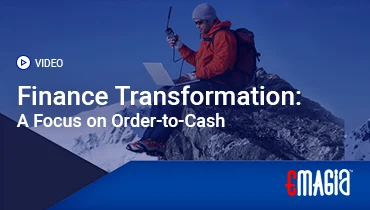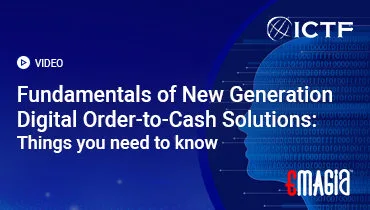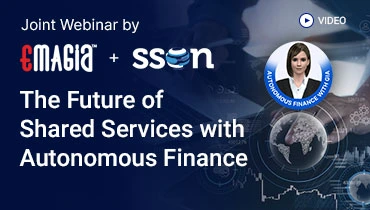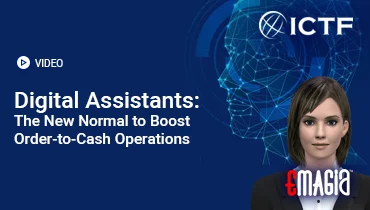Introduction: The Imperative for Unified Credit Data View in Modern Business
In today’s fast-paced economic landscape, effective credit risk management is paramount for business survival and growth. Traditional methods of assessing creditworthiness, often relying on fragmented data from individual sources, are no longer sufficient. Businesses need a comprehensive, real-time understanding of their customers’ and partners’ financial health. This is where credit agency data aggregation becomes indispensable.
Credit agency data aggregation is the sophisticated process of collecting, compiling, and unifying credit-related information from various credit bureaus, financial institutions, and alternative data sources into a single, cohesive dataset. This integrated view empowers companies to make faster, more accurate, and more confident credit decisions, mitigating risk and optimizing financial strategies.
This article will delve deep into the world of credit agency data aggregation, exploring its mechanisms, the profound benefits it offers, the challenges it addresses, and how advanced platforms are setting new standards for credit risk data aggregation solutions. We will discover how achieving a unified credit data view is transforming credit management from a reactive process into a proactive strategic advantage.
Understanding Credit Agency Data Aggregation: A Holistic Approach to Credit Intelligence
At its core, credit agency data aggregation refers to the systematic collection and consolidation of disparate credit data. This data typically originates from multiple credit bureau data aggregation points, including major credit reporting agencies (like D&B, Experian, Equifax, TransUnion), public records, financial statements, and even industry-specific trade references.
The process goes beyond mere collection. It involves standardizing data formats, cleansing inconsistencies, and linking related information to create a comprehensive profile for each entity. This integrated approach replaces the cumbersome task of manually gathering reports from various sources, offering a streamlined path to actionable credit intelligence.
How Credit Agency Data Aggregation Works: The Mechanism of Data Integration
The operational mechanism of credit agency data aggregation involves several critical steps, often facilitated by specialized credit data integration services and platforms.
- Data Sourcing: The process begins by establishing secure connections with various credit bureau data aggregation providers and other relevant data sources. This includes APIs for real-time data pulls from credit agencies, as well as mechanisms to integrate public financial information, trade payment data, and internal customer history.
- Data Extraction and Transformation: Raw data, often in varied formats, is extracted. It then undergoes rigorous transformation, cleaning, and normalization. This ensures consistency and compatibility across all datasets, forming the foundation for a reliable unified credit data view.
- Data Consolidation and Unification: The cleaned and standardized data is then merged into a central repository. Intelligent algorithms identify and link related records, even if they have minor variations, creating a single, holistic credit profile for each customer or business. This forms the basis of corporate credit data aggregation.
- Analysis and Scoring: Once aggregated, the data can be fed into analytical models to generate comprehensive credit scores, risk classifications, and recommended credit limits. This often leverages advanced analytics to turn raw data into actionable insights for credit risk data aggregation solutions.
- Real-time Updates and Monitoring: Effective credit agency data aggregation platforms offer continuous monitoring. They automatically fetch updated data from agencies and trigger alerts for significant changes in credit profiles, ensuring that businesses always operate with the most current information.
The Transformative Benefits of Credit Agency Data Aggregation for Businesses
Adopting credit agency data aggregation solutions brings a multitude of advantages that directly impact a company’s financial health and operational efficiency. These benefits are critical for any organization seeking to optimize its credit management processes.
Enhanced Credit Risk Assessment with Aggregated Credit Data
By consolidating data from multiple sources, businesses gain a far more accurate and nuanced understanding of credit risk. This goes beyond a single credit score, offering deeper insights into payment behavior, financial stability, and potential red flags. A unified credit data view allows for more precise risk modeling and segmentation of customer portfolios.
Faster and More Informed Credit Decisions through Data Integration
Manual data gathering and analysis can significantly delay credit approval processes, impacting sales cycles and customer onboarding. Credit data integration services automate this, providing instant access to comprehensive credit profiles. This enables rapid, data-driven decisions, accelerating approvals for reliable customers while quickly identifying high-risk applications.
Improved Operational Efficiency and Resource Optimization
Automating the data aggregation process frees up valuable resources within credit and finance departments. Instead of spending hours on data collection and manual entry, teams can focus on strategic analysis, customer relationship management, and proactive risk mitigation. This leads to substantial gains in overall operational efficiency.
Proactive Risk Management and Early Warning Systems
Continuous monitoring, a key feature of modern credit agency data aggregation platforms, allows businesses to set up early warning systems. Automated alerts notify credit teams of significant changes in a customer’s credit profile, such as downgrades, late payments, or insolvencies, enabling proactive intervention to prevent bad debt.
Better Compliance and Audit Trails
Corporate credit data aggregation platforms create a transparent, auditable trail of all credit-related data and decisions. This helps businesses meet regulatory compliance requirements and simplifies internal and external audits, demonstrating robust risk management practices.
Enhanced Customer Experience and Competitive Advantage
Faster credit decisions translate directly to a better customer experience. Businesses can onboard new clients more quickly and respond to credit requests with agility. This speed and efficiency, powered by comprehensive credit agency data aggregation, provides a significant competitive advantage in the marketplace.
Key Components and Features of Advanced Credit Agency Data Aggregation Platforms
When evaluating credit agency data aggregation platforms, certain features stand out as essential for robust and efficient credit risk management.
Multi-Source Credit Data Integration and Connectors
The core of any effective platform is its ability to pull data from a wide array of sources. This includes direct API connections to major credit bureaus (e.g., D&B, Experian, Equifax, TransUnion), integration with public records (UCC filings, bankruptcies), and capabilities to ingest internal trade references and financial statements. Robust credit data integration services are paramount.
Automated Data Normalization and Cleansing
Raw data from different sources often comes in varied formats and may contain inconsistencies or errors. An advanced aggregation platform must automatically cleanse, standardize, and normalize this data to ensure a consistent and reliable unified credit data view.
Real-time Credit Monitoring and Alerting
Beyond one-time data pulls, the ability to continuously monitor changes in credit profiles and receive immediate alerts for significant events (e.g., credit rating downgrades, new judgments) is crucial for proactive risk management. This functionality is vital for credit risk data aggregation solutions.
Customizable Credit Scoring and Risk Models
While credit bureaus provide their own scores, the best aggregation platforms allow businesses to integrate their unique risk criteria and build custom scoring models. This allows for tailored risk assessments that align with specific business policies and industry nuances, enhancing the utility of corporate credit data aggregation.
Comprehensive Reporting and Analytics Dashboards
Aggregated data is only valuable if it can be easily analyzed and reported on. Look for platforms that offer intuitive dashboards, customizable reports, and drill-down capabilities to visualize credit exposures, identify trends, and measure risk across portfolios.
Security and Compliance Protocols
Handling sensitive credit information demands the highest level of security. Ensure the platform adheres to stringent data privacy regulations (e.g., GDPR, CCPA) and employs robust security measures like encryption, access controls, and regular audits. Compliance is non-negotiable for any credit bureau data aggregation solution.
Challenges in Credit Agency Data Aggregation and How to Overcome Them
While the benefits are clear, implementing credit agency data aggregation isn’t without its challenges. Understanding these hurdles is the first step toward successful adoption.
Data Quality and Consistency Issues
Integrating data from disparate sources often exposes inconsistencies, duplicates, or missing information. Ensuring high data quality is paramount. Robust data cleansing and normalization capabilities within the aggregation platform are essential to overcome this.
Integration Complexity and Technical Hurdles
Connecting with numerous credit agencies and internal systems can be technically complex. Relying on platforms with pre-built connectors and flexible APIs can significantly reduce integration challenges and the need for extensive IT involvement.
Data Security and Privacy Concerns
Dealing with sensitive credit information necessitates stringent security protocols and adherence to data privacy regulations. Choosing a vendor with a proven track record in data security and compliance is critical to mitigate these risks.
Scalability and Performance
As transaction volumes grow and more data sources are added, the aggregation platform must be able to scale without compromising performance. Cloud-based solutions often offer the elasticity required to handle increasing data loads.
Beyond Aggregation: How Emagia Powers Intelligent Credit Risk Management
While credit agency data aggregation provides the foundational data for informed decisions, truly intelligent credit risk management requires a platform that can not only aggregate but also analyze, predict, and automate. Emagia’s AI-powered Order-to-Cash (O2C) platform elevates credit management beyond simple data collection.
Emagia integrates seamlessly with leading credit bureau data aggregation providers and various internal data sources, providing a dynamic and comprehensive unified credit data view. But it doesn’t stop there. Emagia leverages its advanced AI capabilities to transform raw, aggregated data into actionable credit intelligence:
- AI-Powered Credit Scoring: Emagia applies machine learning models to the aggregated data, creating highly accurate, predictive credit scores tailored to your business. This goes beyond static bureau scores, providing dynamic risk assessments that learn and adapt.
- Automated Credit Limit Recommendations: Based on the aggregated data and AI analysis, Emagia can automatically recommend credit limits, accelerating the credit approval process and ensuring optimal risk exposure.
- Real-time Credit Portfolio Monitoring: Emagia’s continuous monitoring capabilities track changes across your entire customer portfolio, immediately alerting you to shifts in risk profiles. This proactive approach helps mitigate potential bad debt before it escalates.
- Intelligent Workflows for Credit Decisions: Beyond just data, Emagia orchestrates intelligent workflows for credit application processing, review, and approval, reducing manual intervention and ensuring consistency.
- Enhanced Collaboration: By providing a single source of truth for credit data, Emagia facilitates seamless collaboration between sales, credit, and finance teams, ensuring everyone operates from the same, accurate information.
- Robust Reporting and Analytics: Emagia offers sophisticated dashboards and reporting tools that leverage the aggregated data, providing deep insights into your credit exposure, risk trends, and the effectiveness of your credit policies.
Emagia transforms credit agency data aggregation from a data collection task into a strategic asset, empowering businesses to not only manage credit risk efficiently but also to leverage credit as a growth enabler. It moves you from merely seeing data to understanding and acting upon intelligent credit insights.
Frequently Asked Questions About Credit Agency Data Aggregation
What does credit data aggregation mean?
Credit data aggregation is the process of collecting and combining credit-related information from various sources—like credit bureaus, public records, and internal data—into a single, unified view. This provides a comprehensive financial profile for better credit risk assessment.
Why is credit agency data aggregation important for businesses?
Credit agency data aggregation is vital for businesses because it enables faster, more accurate credit decisions, improves risk assessment, enhances operational efficiency, allows for proactive risk management, and ensures compliance. It replaces manual, fragmented data collection with a streamlined, intelligent process.
What kind of data is included in credit data aggregation?
Credit agency data aggregation typically includes credit scores, payment history, outstanding debts, public records (like bankruptcies or liens), trade references, and sometimes even financial statements or industry-specific risk indicators. The goal is to build a complete unified credit data view.
What are the challenges of credit agency data aggregation?
Challenges in credit agency data aggregation often include ensuring data quality and consistency from diverse sources, technical complexities of integrating various systems, maintaining stringent data security and privacy, and ensuring the platform can scale with growing data volumes.
How do credit data integration services improve credit risk management?
Credit data integration services enhance credit risk management by providing a holistic and real-time view of creditworthiness. This allows businesses to identify high-risk accounts faster, develop more accurate credit policies, and proactively manage their credit exposure across their entire portfolio.
Can credit data aggregation help with fraud detection?
Yes, credit agency data aggregation can significantly aid in fraud detection. By consolidating and analyzing data from multiple sources, it becomes easier to spot anomalies, inconsistencies, or unusual patterns that might indicate fraudulent activity, enabling quicker identification and mitigation.
Conclusion: Powering Strategic Decisions with Unified Credit Data
In an era where data drives every strategic decision, credit agency data aggregation stands out as a fundamental pillar for robust financial health. Moving beyond archaic, fragmented approaches, businesses now have the power to create a truly unified credit data view, enhancing their ability to assess risk, optimize working capital, and accelerate growth.
The sophisticated credit risk data aggregation solutions available today, exemplified by platforms that offer intelligent automation and comprehensive integration, are no longer just tools for efficiency. They are strategic assets that provide predictive insights, empower proactive risk mitigation, and foster a competitive edge in an increasingly dynamic market. Embracing credit agency data aggregation is an investment in financial precision, operational excellence, and sustainable business success.



